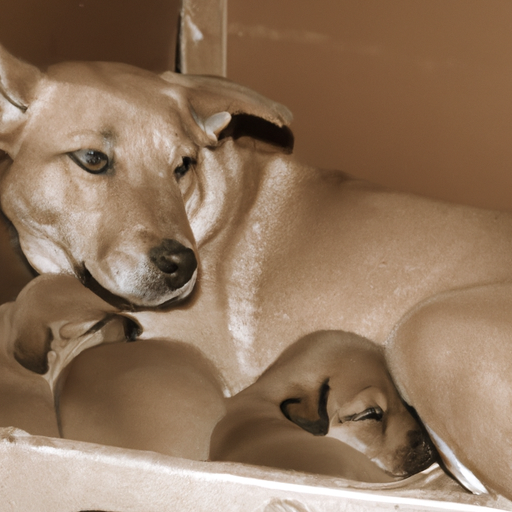“`markdown
What Does Whelping Mean for Dogs?
Introduction
If you’re here, it means you care deeply for your canine companions and are eager to understand the intricate process of whelping. Whelping, in the simplest term, is the act of a female dog giving birth to puppies. But, dear caregiver, the process is far more complex and beautiful than it sounds.
Understanding the Canine Pregnancy
Before we delve into whelping, let’s take a quick tour of the canine pregnancy:
- Estrus: This is when your dog is in heat and ready to mate.
- Mating and Fertilization: The male dog’s sperm fertilizes the female dog’s egg.
- Gestation: The period of pregnancy, approximately lasts for 63 days.
During the gestation period, you’ll notice your dog:
- Eating more
- Showing a swollen belly
- Exhibiting nesting behavior
The Whelping Process: A Step-by-Step Guide
When your dog is about to give birth, you’ll see telltale signs. She’ll be restless, refuse food, and may even vomit. As you navigate through this journey, remember to remain calm and supportive. Your presence will comfort her.
The whelping process includes:
- Stage One: The cervix and uterus prepare for delivery. Your dog may appear anxious and may have contractions.
- Stage Two: This is when the puppies are born. Each puppy comes in its own amniotic sac, which the mother will clean off.
- Stage Three: After all the puppies are born, the mother will expel the remaining placenta(s).
What to Expect After Whelping
Once the whelping process is over, you’ll notice some changes in your dog.
| Behavior | What it Means |
|---|---|
| Loss of appetite | Normal for the first 24 hours |
| Frequent nursing | The mother is feeding her puppies |
| Discharge | Normal unless it’s foul-smelling |
Caring for the Mother and Puppies Post-whelping
Your role as a caregiver doesn’t end with the birth of the puppies. Both the mother and her pups will need continued care and attention.
- Ensure the mother is eating well.
- Keep the whelping area clean.
- Watch out for signs of distress in the puppies (like constant crying).
- Schedule a postnatal check-up with your vet.
Frequently Asked Questions
Q1: Can I help my dog during the whelping process?
A1: Yes, you can offer comfort and help clean the puppies if the mother is unable or unwilling.
Q2: How long does whelping take?
A2: It can take from a few hours up to 24 hours.
Q3: When should I contact a vet during the whelping process?
A3: If your dog is in visible distress, has a high fever, or if a puppy seems stuck, contact a vet immediately.
Remember, whelping is a natural process, and your dog is instinctively equipped to handle it. As a caregiver, your role is to provide a safe, quiet, and comfortable environment, and to intervene only when necessary. Now that you understand what whelping means for dogs, you are ready to support your furry friend through this beautiful journey.
“`



